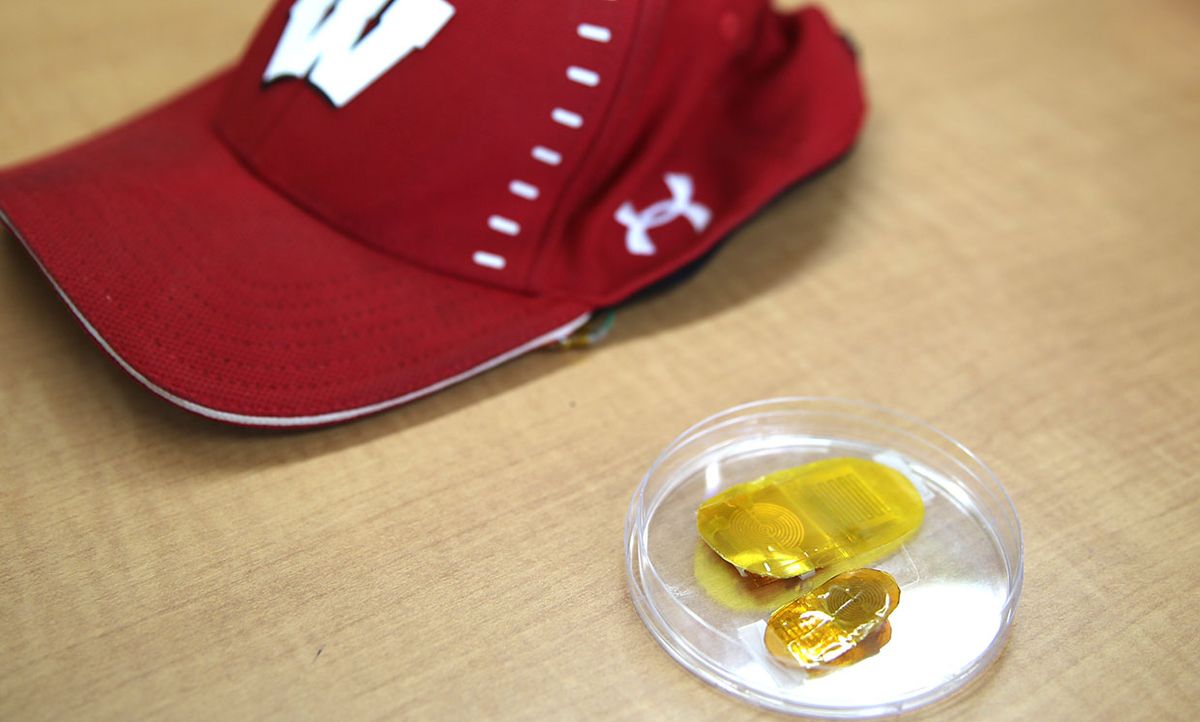Why waste the energy used to tilt one’s head or digest food? University of Wisconsin-Madison engineer Xudong Wang is an expert at harvesting the body’s mechanical energy to power devices, such as an electric bandage that accelerates healing and a stomach implant that subdues hunger.
Now, Wang’s team is back with a self-powered wearable to tackle an age-old nemesis: hair loss.
Wang’s lab has created a motion-activated, flexible wearable that promotes hair regeneration via gentle electrical stimulation. They describe their work in a study published this month in the journal ACS Nano. In rodents, the device stimulated hair growth better than conventional topical medications.
The device can be discreetly hidden under a baseball cap, says Wang. He hopes to begin a clinical trial with humans within six months.
Still, the treatment won’t work for everyone: “Any technology to help hair grow requires some hair follicles to still be in there,” says Wang. “If a head has been completely bald for ten years and the hair follicles are completely gone…then our device, or any technology, will not be able to help.”
Today’s hair loss treatments are limited and imperfect: Topical medications can cause side effects such as sexual dysfunction and anxiety and hair transplantations requires several rounds of surgery.
Several previous studies have suggested electrical stimulation may be a safe, non-invasive, alternative treatment for hair loss. With that in mind, Wang applied his self-powered devices to the task.
The soft, stretchy device used in the study is about 1 to 2 millimeters thick and can be made in various sizes, says Wang. It contains no batteries or electronics, just a flexible rectangle of layered polymers that form a nanogenerator, which gathers energy from random movements of the body or head, and a small electrode that transmits that energy to the skin in the form of gentle, low-frequency pulses of electricity.
In a small experimental study—including just 12 animals total—the device performed well. Over a period of four weeks, rats with the device attached to shaved backs had faster hair growth and produced more dense hair than a control group of mice treated with topical medications. In genetically engineered nude mice, which lack the ability to develop fur, the device caused hair to grow longer and thicker than the other groups, and that hair remained on the backs of the mice for longer. None of the subjects experienced side effects from the electrical stimulation, says Wang.

“The next step is human trials and to move to market as soon as we can,” says Wang, who has patented the technology. He hopes to begin human studies in the next six months to test the device on men and women at varying stages of baldness, and move to commercialization within a year.
Megan is an award-winning freelance journalist based in Boston, Massachusetts, specializing in the life sciences and biotechnology. She was previously a health columnist for the Boston Globe and has contributed to Newsweek, Scientific American, and Nature, among others. She is the co-author of a college biology textbook, “Biology Now,” published by W.W. Norton. Megan received an M.S. from the Graduate Program in Science Writing at the Massachusetts Institute of Technology, a B.A. at Boston College, and worked as an educator at the Museum of Science, Boston.



